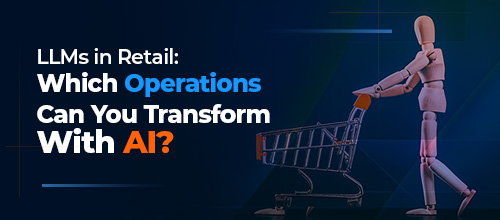Elevating Security on the Cloud with Zero Trust Security

Haseeb Abdul
Cloud Practice Lead at Royal Cyber Inc.
October 25, 2023
In today’s highly interconnected world, where data breaches and cyber-attacks are becoming increasingly common, traditional network security solutions are no longer sufficient to protect sensitive information. Furthermore, the widespread use of cloud services to store and access data has made it more critical than ever for organizations to ensure robust security measures. This is where the Zero Trust security model emerges, reshaping how organizations approach security to mitigate risks and safeguard their most critical assets.
Zero Trust security is a game-changer in network security, especially in cloud environments. This blog delves into the role of Zero Trust security in the cloud, how cloud service providers (CSPs) ensure its implementation, and the challenges companies face without the necessary expertise to enforce Zero Trust security.
What is Zero Trust Security?
Zero Trust is a security model that does not rely on a network perimeter to protect valuable data. Instead, it requires strict identity verification for all users, devices, and network traffic.
The stages of cybersecurity have evolved as new threats and attack vectors have emerged. Here are the main stages:

Traditionally, organizations have relied on a trusted network perimeter, assuming that internal users and devices are inherently trustworthy while external connections are treated with suspicion. However, the constantly evolving threat landscape has proven this approach flawed, as sophisticated attackers can easily bypass traditional security measures once they have breached the perimeter.
Based on the stages of cybersecurity in the diagram above, the zero trust security model falls into the risk-based security stage. Still, it takes a more granular risk assessment and control implementation approach. Assuming no user or device can be trusted, zero trust security can help organizations prevent even the most sophisticated cyberattacks. Implementing a Zero Trust security model provides numerous benefits, including improved security posture, enhanced data protection, agility, flexibility, and regulation compliance.
Watch our webinar session, where our experts demonstrate how you can elevate cloud security with zero trust security principles.
Critical Principles of Zero Trust Security
Zero Trust security introduces several essential principles to enhance network security:
Least Privilege Access
Grants only necessary privileges to users and devices by enforcing granular access controls and monitoring continuously to ensure authorized access to critical resources.
Micro-segmentation
Grants only necessary privileges to users and devices by enforcing granular access controls and monitoring continuously to ensure authorized access to critical resources.
Multi-factor Authentication (MFA)
By requiring multiple verification forms, such as passwords, biometrics, or smart cards, MFA adds an extra layer of protection against unauthorized access attempts.
Continuous Monitoring and Analytics
Zero Trust emphasizes continuous monitoring and analytics to promptly detect anomalies and respond to security incidents to mitigate risks.
Zero Trust Security in Cloud Environments
Cloud environments introduce different security challenges compared to traditional on-premises networks. With data storage and processing spread across multiple locations and shared among a diverse range of users, the traditional perimeter-based security model becomes obsolete. Zero Trust security provides a holistic approach to cloud security, ensuring that every user, device, and network interaction is authenticated and authorized before accessing critical resources.
In a Zero Trust model, every user and device are untrusted, regardless of location or organizational status. This means all network traffic, even within the cloud environment, is subjected to continuous scrutiny and verification. Organizations can maintain control over their data by implementing Zero Trust, ensuring only authorized individuals can access it.
How Cloud Service Providers Ensure Zero Trust Security
Cloud service providers are crucial in ensuring Zero Trust security within their platforms. Here are some key measures CSPs take to provide a secure cloud environment:
- Identity and Access Management (IAM)
- Network Segmentation for Cloud Networks
- End-to-End Data Encryption
- Monitoring Traffic and Log Data
AWS, Azure, GCP, and Oracle Cloud offer various services and features that can be used to implement a zero-trust security model. However, there are some differences in their approaches:
- AWS (Amazon Web Services) focuses on identity and access management (IAM), using features like IAM roles and permissions, federation, and multi-factor authentication to control who has access to what resources. AWS also offers several other security services, such as CloudWatch, GuardDuty, and Inspector, that can be used to detect and respond to threats.
- Azure takes a more holistic approach to zero trust, focusing on micro-segmentation, least privilege, and continuous monitoring. Azure also offers several security services, such as Azure Active Directory, Azure Firewall, and Azure Security Center, that can be used to implement a zero trust security model.
- GCP (Google Cloud Platform) focuses on visibility and control, using features like Cloud Audit Logging, Cloud Identity and Access Management (IAM), and Cloud Key Management Service (KMS) to give organizations visibility into their environment and control over who has access to what resources. GCP also offers some other security services, such as Cloud Security Command Center (SCC) and Cloud Data Loss Prevention (DLP), that can be used to implement a zero trust security model.
- Oracle Cloud Infrastructure takes a layered approach to zero trust, focusing on identity, network, and application security. Oracle Cloud offers many security services, such as Oracle Identity Cloud Service, Oracle Cloud Infrastructure Security Hub, and Oracle Cloud Infrastructure Web Application Firewall, that can be used to implement a zero trust security model.
The best approach to zero trust security will vary depending on the organization’s needs. However, all four cloud providers offer a wide range of services and features that can be used to implement a zero trust security model.
While Zero Trust security holds immense value for organizations operating in cloud environments, implementing and enforcing it can be challenging, particularly for companies without the required expertise. Some of the difficulties companies may encounter include:
Conclusion
As organizations increasingly adopt cloud services, the importance of implementing Zero Trust security measures cannot be overstated. Cloud service providers significantly ensure Zero Trust security within their platforms, incorporating identity and access management, network segmentation, encryption, and logging and monitoring.
However, organizations without the required expertise may face challenges in enforcing Zero Trust security effectively. To overcome these difficulties, companies must invest in training and education for their IT staff or seek assistance from external professionals who can provide guidance and expertise. This is where Royal Cyber can help. As cloud partners to the top platforms, our experts have a wealth of expertise in implementing and supporting organizations in enforcing zero trust security architecture for their cloud environment. For more information on how royal Cyber can help you instill the best security practices for your business, visit our website, www.royalcyber.com, or contact us at [email protected].
Author
Priya George
Implement Zero Trust Security for Your Cloud Infrastructure
Recent Posts
- Defining Headless Architecture for eCommerce Businesses July 19, 2024
- Bridging Offline and Online Shopping Experiences with SAP Customer Data Cloud July 19, 2024
- Maximizing ITSM Efficiency with ServiceNow Now Assist July 19, 2024
- Building High-Performance Python Applications with Ray on Apache Spark July 18, 2024
Recent Blogs
- Harness the power of AI with Salesforce Einstein GPT for Service Cloud. Unlock innovative ways …Read More »
- Discover Salesforce Hyperforce, the future of cloud deployment. Explore its scalability, security, and global reach, …Read More »
- Artificial Intelligence (AI) has been making significant waves across various industries, revolutionizing business operations.Read More »



